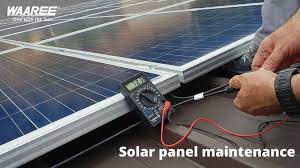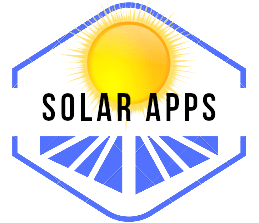Solar panels(solar panel maintenance) have become an increasingly popular choice for individuals and businesses looking to harness clean and renewable energy. As the world transitions towards sustainable practices, solar energy plays a crucial role in reducing our dependence on fossil fuels. However, to maximize the benefits of solar power, proper maintenance of solar panels is essential. In this comprehensive guide, we will explore the key aspects of solar panel maintenance, including routine care, troubleshooting, and tips for ensuring optimal performance and longevity.
Contents
- 1 Understanding the Basics of Solar Panels
- 2 Regular Cleaning and Inspection
- 3 Monitoring System Performance
- 4 Addressing Common Issues
- 5 Seasonal Considerations
- 6 Professional Maintenance Services
- 7 Advanced Solar Panel Maintenance Techniques
- 8 Harnessing Technology for Maintenance
- 9 Environmental Considerations
- 10 Cost-Effective Maintenance Strategies
- 11 Conclusion
Understanding the Basics of Solar Panels
Before delving into maintenance practices, it’s important to have a basic understanding of how solar panels work. Solar panels, also known as photovoltaic (PV) modules, convert sunlight into electricity through the photovoltaic effect. Each panel consists of numerous solar cells, typically made of silicon, that absorb sunlight and generate direct current (DC) electricity. This electricity is then converted into usable alternating current (AC) through an inverter, making it suitable for powering homes, businesses, and other applications.
Regular Cleaning and Inspection
Cleaning Procedures
- Frequency: Regular cleaning is crucial to maintaining optimal efficiency. Ideally, solar panels should be cleaned at least twice a year. However, the frequency may vary depending on the local climate, environmental conditions, and the presence of dust or debris.
- Cleaning Agents: Use a gentle cleaning solution, such as a mixture of mild soap and water, to clean the surface of the panels. Avoid abrasive cleaners or materials that could scratch the glass surface and potentially reduce the panel’s efficiency.
- Tools: Soft brushes, sponges, or soft cloths are recommended for cleaning. Alternatively, a hose with a gentle spray attachment can be used to rinse off dust and dirt.
Inspection Procedures
- Visual Inspection: Regularly inspect the panels for any visible damage, such as cracks, chips, or discoloration. Any damage to the surface can impact the panel’s efficiency and should be addressed promptly.
- Tighten Loose Connections: Check for loose wiring or connections. Tighten any bolts or screws as needed to ensure a secure electrical connection.
- Monitor Vegetation: Ensure that there is no vegetation growing around or shading the panels. Trim overhanging branches or plants that may obstruct sunlight.
Monitoring System Performance
A. Utilize Monitoring Tools: Many solar panel systems come equipped with monitoring tools that allow homeowners or system operators to track the performance of their solar panels. These tools can provide real-time data on energy production, allowing for early detection of potential issues.
B. Check Inverter Readings: Inverters play a critical role in converting DC electricity to AC. Regularly check the inverter readings to ensure that it is operating within the specified parameters. Unusual readings may indicate a malfunction that requires attention.
C. Monitor Energy Output: Keep track of your solar system’s energy output over time. A sudden decrease in energy production may indicate issues with individual panels or the overall system.
Addressing Common Issues
A. Bird Droppings and Debris: Bird droppings, leaves, and other debris can accumulate on the surface of solar panels, reducing their efficiency. Promptly clean any such deposits to maintain optimal performance.
B. Snow and Ice Accumulation: In snowy climates, snow accumulation on solar panels can impede sunlight absorption. Gently remove snow using a soft brush or wait for natural melting to occur. Avoid using sharp tools that could damage the panels.
C. Faulty Wiring or Connectors: If you observe any exposed or damaged wiring, or if connectors appear loose, consult a professional to address the issue. Faulty wiring can pose safety hazards and reduce the efficiency of the solar panel system.
D. Inverter Issues: Inverter problems can significantly impact the performance of a solar panel system. If you notice unusual noises, error messages, or inconsistent readings on the inverter, seek professional assistance to diagnose and resolve the issue.
Seasonal Considerations
A. Winter Precautions: In winter, it’s essential to consider the impact of snow and shorter daylight hours on solar panel efficiency. Regularly monitor and clean panels as needed, and be mindful of potential shading from snow accumulation.
B. Summer Maintenance: In hot climates, solar panels may accumulate dust more rapidly. Increase the frequency of cleaning during the summer months to ensure optimal performance.
Professional Maintenance Services
- Scheduled Inspections: Consider scheduling professional inspections at least once a year. Certified technicians can conduct a thorough examination of the entire solar panel system, identify potential issues, and perform necessary maintenance tasks.
- Warranty Compliance: Adhering to manufacturer-recommended maintenance practices is crucial to preserving the warranty of your solar panels. Failure to follow guidelines may void warranty coverage.

Advanced Solar Panel Maintenance Techniques
A. Thermal Imaging Inspections: For a more in-depth analysis of solar panel performance, thermal imaging inspections can be employed. These inspections identify “hot spots” on the panels, which may indicate potential issues with individual cells. By detecting anomalies early, thermal imaging can help prevent further damage and optimize the overall efficiency of the solar array.
B. Electroluminescence Testing: This advanced testing method involves capturing images of solar panels in the dark using electroluminescence. It helps identify defects that may not be visible during daylight hours. Professionals can use this technique to pinpoint issues like microcracks or delamination within the solar cells.
C. PID (Potential-Induced Degradation) Mitigation: PID is a phenomenon that can lead to a reduction in solar panel efficiency over time. It occurs when voltage potential causes leakage currents within the cells. Implementing PID mitigation measures, such as adding a PID-resistant module or installing a PID box, can help prevent and address this issue.
Harnessing Technology for Maintenance
A. Smart Monitoring Systems: Leveraging smart monitoring systems and IoT (Internet of Things) technology can provide real-time insights into the performance of solar panels. These systems often include mobile apps or online platforms that allow users to track energy production, detect anomalies, and receive alerts for potential issues.
B. Automated Cleaning Systems: In areas with high dust or pollution levels, automated cleaning systems can be installed. These systems use robotic devices equipped with brushes or wipers to clean the solar panels automatically. While more common in large-scale solar installations, this technology is becoming more accessible for residential use.
C. Remote Diagnostics and Maintenance: Remote monitoring and diagnostics allow technicians to assess the health of a solar panel system without physically being on-site. This can save time and resources, enabling swift responses to emerging issues and reducing downtime.
Environmental Considerations
A. Sustainable Cleaning Practices: When cleaning solar panels, consider using eco-friendly cleaning agents to minimize environmental impact. Additionally, collecting rainwater for cleaning purposes is a sustainable alternative to using tap water.
B. End-of-Life Recycling: As solar panels reach the end of their life cycle, responsible disposal and recycling become important. Many components of solar panels, including glass, aluminum, and silicon, can be recycled. Various recycling programs and facilities specialize in processing and repurposing these materials.
Cost-Effective Maintenance Strategies
- DIY Maintenance Tips: While certain maintenance tasks require professional expertise, there are simple DIY tips that homeowners can follow, such as regular visual inspections, cleaning, and checking for loose connections.
- Group Purchasing for Professional Services: Collaborating with neighbors or nearby solar panel owners for professional maintenance services can lead to cost savings. Companies often offer discounts for servicing multiple installations in the same area.
- Government Incentives: In some regions, governments may offer incentives or subsidies for solar panel maintenance. Check with local authorities to explore available programs that can help offset maintenance costs.
Conclusion
Maintaining solar panels goes beyond routine cleaning; it involves a proactive approach to address potential issues and harness emerging technologies. As solar energy continues to play a pivotal role in the global transition to sustainable practices, the importance of efficient and well-maintained solar panel systems cannot be overstated. By incorporating advanced maintenance techniques, embracing technological solutions, and considering environmental sustainability, solar panel owners can contribute not only to their energy independence but also to the broader goal of creating a cleaner and more sustainable future. Regular attention to solar panel maintenance ensures that these investments continue to provide clean and renewable energy for many years to come.
Maintaining solar panels is a vital aspect of ensuring their long-term performance and maximizing the benefits of renewable energy. By incorporating routine cleaning, and inspections, and addressing issues promptly, solar panel owners can extend the lifespan of their systems and contribute to a more sustainable future. Regular monitoring, proactive maintenance, and occasional professional services will not only protect your investment but also allow you to enjoy the full advantages of clean and efficient solar power for years to come.
